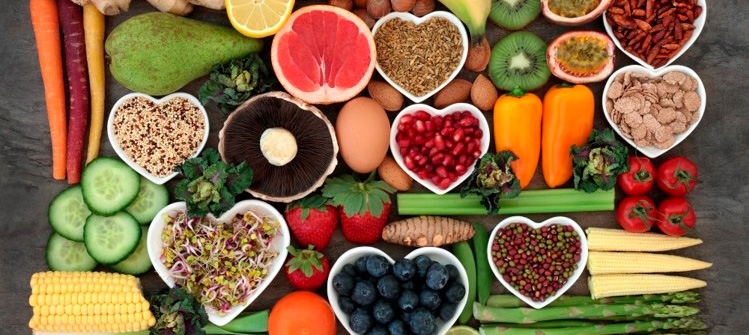We spoke to Stineke Oenema, Global Coordinator of the UN System Standing Committee on Nutrition (UNSN) about the current nutrition outlook and if we really are moving into a new nutrition reality.
A report in The Lancet, entitled A new nutrition manifesto for a new nutrition reality, sets out the urgency to address and tackle malnutrition throughout the world, and how in the “nutrition decade” that leads to the 2030 Sustainable Development Goals (SDGs), “a new global nutrition movement” is at the core of achieving these.
Good nutrition and removing malnutrition
As we enter the latter half of the Decade of Action (2016-2025), attention has turned to advance our global efforts to ensure we meet the SDGs. The SDGs, particularly SDG 2: Zero Hunger and SDG 3: Good Health and Wellbeing, emphasize the importance of ending “malnutrition in all its forms and ensuring access to nutritious food for all people by 2030”.
Good nutrition and human health are vital to attaining sustainable development throughout the world. Currently, 149 million children have stunted growth, while childhood overweight and obesity are increasing in almost every area throughout the globe. In addition, suboptimal diets are responsible for one in five (22%) adult deaths around the world, the report details.
The report specifies that global malnutrition displays a “common denominator”: Failing food systems that are currently not providing healthy, safe, affordable, and sustainable diets. Accentuating the devastating and long-lasting impact of insufficient food systems, the report states: “The economic, social, and environmental costs of inaction will hinder the growth and development of individuals and societies for decades to come.”
The emerging nutrition movement
Citing two core characteristics of the emerging nutrition movement, UNSN’s Oenema explained: “The most important characteristic is that new actors beyond the health and nutrition arenas are involved.”
These new actors go beyond the already-present agricultural sector – which was addressing nutrition through nutrition sensitive agriculture -, and now extends to sectors like education, water and environment”, Oenema added.
The second characteristic is that today, many actors these different sectors are urging the transformation of the food system to take place to achieve “better nutrition”. As a result, many of the ‘new’ actors now see how they, from their place in the food system consider their role as one that could positively contribute to improving nutrition.
Commenting on the key influence driving the emergence of the new nutrition reality, Oenema relayed that the key driver is the “notion of urgency: our food system is not good for our health, it is making us sick and at the same time polluting the soil, water and air as well as contributing to climate change”. It is this sense of urgency around a common problem that “brings actors together” as they “realize they cannot manage this complex and interrelated problem alone”.
The impact of economic growth and urbanization on our lifestyles and eating habits are also notable influencers, Oenema explains. These create changing attitudes to eating preferences, such as choosing more highly processed foods that are high in sugars, salt and fats and low in fibers, as well as opting for more animal-based foods over more plant-based diets.
Battling siloes
Siloed interventions make it challenging to disrupt the current food system. “Silos must be broken down. Magic bullets do not exist,” the report outlines. Societal shifts are necessary to reverse this future trajectory. These shifts must also be capable of scalability and sustainability in the coming decades, the report emphasizes.
In breaking down the soles that exist, the report states that the previous 2013 Lancet Comment that stated “only collective action will end undernutrition” remains true in 2020. However, the globe now seeks a wider response following the “political economy of food, the commodification of food systems and growing patterns of inequality” throughout the world.
Transforming food systems
The world now requires “meaningful change” from throughout the entire food system, including production and processing, trade and distribution, pricing, marketing, food labelling, and consumption and waste.
Food producers and consumers alike must be visible and active participants in the conversation to help overhaul the current system. Severe weather is increasingly affecting farmers, while small and medium enterprises (SMEs) are crucial to the efforts to attain environmental sustainability and more inclusive growth. From the consumer perspective, it is important to demand transparency and accountability from manufacturers and brands to build trust.
Communities, cities, regions, and nations all have a role to play in transforming the current food systems and in doing so, the nutrition reality. “All relevant policies and investments must be radically re-examined,” the report adds, to support these actions.
Forging effective partnerships
Strategic partnerships are vital, yet the reports warn of the dangers to human and planetary health that result from incompatible partnerships. Damage and mistrust along with influence and interference in public policymaking or that impacts the science that underpins the policymaking process should not be allowed, the report goes on to say.
Engagement, inclusion, and empowerment of rights-holders such as women, smallholder farmers, young people, and marginalized groups need to be at the forefront of multi-stakeholder actions if the world is to deliver change and address malnutrition.
Dedicated efforts are championing this approach. Over 60 countries, for example, have joined the Scaling Up Nutrition (SUN) Movement, which commits to accountable action-taking and measured outcomes.
Together, The SDGs, the UN Decade of Action on Nutrition (2016-2025) and the 2020 Nutrition for Growth Summit in Japan provide additional opportunities to enable stakeholders to expand their promise to sustained accountability — and avoid “empty promises [that] fail populations and risk delaying progress”, the report states.
Local, regional and national: What changes are needed?
As shifts at every level are necessary to deliver real positive impact, we asked what transformation needs to take place locally, regionally and nationally to enable food systems to change? Stineke Oenema, Global Coordinator of the UN System Standing Committee on Nutrition (UNSN) detailed four key areas:
- Change is needed at all levels, including at the global level. At all levels, transparency and participation in decision making are needed. The malnutrition crisis is not evenly distributed; there are groups that are disproportionately affected, and these groups need a bigger voice in policies that affect them.
- Rules and regulations are needed to regulate how all these new actors can and should play a role. Regulations are especially important when there are powerful groups like multinational companies that may have a big impact on nutrition. Global policies are needed to protect vulnerable groups and guide regional and national policies. At the same time, as nutrition is locally contextualized, we need to support local governance for better nutrition. We need to make sure that at the local level where food systems have a very concrete meaning for people, men, women and children, along with relevant decision-makers are at the table.
- Investments will have to change. More investments are needed to foster food systems for better nutrition. Investment also needs to be diverted to a more diverse production system that relies on more diverse crops and species/breeds than the few major ones, — namely wheat, rice and maize — that the world food production is currently relying on. Disinvestments also need to take place in less sustainable and less healthy products. Taxes and subsidies are a way to also incentivize change and to transform food systems
- Tackling inequality. At all levels, inequality needs to be addressed and less advantaged groups should be prioritized in policies.
Tackling global nutrition challenges
Sharing insights on the biggest challenges to preventing a new nutritional reality to take hold and for food systems to change for the better, Oenema revealed how “some actors and decision-makers have huge stakes in the current system and are not likely to be willing to change”.
The issue of accountability is also prevalent: “Governance is a challenge since nutrition is a multi-sectoral issue,” Oenema added. “As many sectors have an impact on nutrition without having nutrition in their objectives, how can you hold them to account?”.
Global nutrition challenges are “beyond the full control of a single national government since trade goes and also investments go beyond national borders”, Oenema said, as the UN discussed in its paper on Global Governance for Nutrition and the role of UNSCN.
Therefore, as we are now in this 2020-2030 “nutrition decade”, as a global community, “a new global nutrition movement is emerging”, the report highlights. And as calls for a broadened community of nutrition stakeholders are present, the new reality needs to prioritize the overhaul of food systems locally, regionally, and globally.
“It is within our collective power; we owe it to our children and future generations,” the report concludes.
Fuente: www.nutraingredients-latam.com

